
Table of Contents

Test

The number-one item on doctors and patients' wish list? A better pain medication-one that isn't addictive, doesn't cause gastrointestinal problems, and targets the source rather than receptors in the brain.
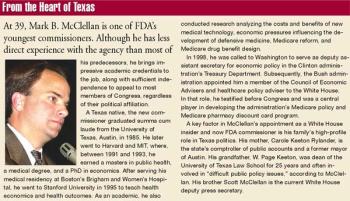
Tremendous changes are underway at FDA headquarters in Rockville, Maryland. Whole sections of biologics review moving from one center to another. Regulatory activities being refocused on risk. Restructured roles for agency field inspectors. And a variety of other reforms, many driven by the specter of bioterror. Despite operating for almost two years without a commissioner, FDA is moving full speed ahead with a major reorganization and a new regulatory philosophy.

Pharma companies must address the same group of stakeholders-customers, employees, shareholders-as any other industry, plus one more. Compliance with FDA and other regulatory agencies is not only critical for success, for some life science companies it determines their very survival.

Table of Contents

On the last stop of a recent trip, I checked into the Bethesda Marriott. It was late afternoon, and as I entered my room, I flicked on the TV set and switched to the cable news. "Five Shootings, Five Dead, in 17 Hours," read the streamer, while the large screen showed a map of the area west of DC.

A new mentality is sweeping Wall Street, leaving many companies shell-shocked. The US equity market's worst performance since the crash of the late '80s has many looking for scapegoats. In response, institutional investors are focusing more intently on the underlying earnings power of each company in their portfolio. They are scrutinizing business models with an eye toward a company's ability to generate future cash flows.

Professors ingrain the mantra "science for science's sake" into their pupils' minds during years of doctorate and postdoctoral training. Consequently, when entering into career paths, students gravitated toward academia, which fosters the perception of itself as accepting of free thinkers.

After saying last year that its treatments for AIDS and malaria were as cheap as they could be, GlaxoSmithKline now claims that improved manufacturing practices and greater economies of scale allow it to reduce prices even more.
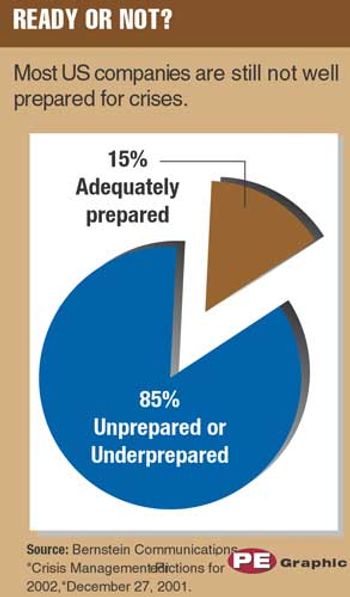
Consumer outrage at daily reports of new financial scandals creates a dangerous environment for corporate reputations, but pharma companies can turn the public's low opinion-and questions about rising drug prices-to their advantage if they work systematically to build long-term trust.

As part of their new joint venture, Johnson & Johnson and Merck want to take their cholesterol-lowering drug Mevacor (lovastatin) from prescription to over-the-counter status, according to company officials.

After months of speculation, in September the White House finally nominated its lead health policy advisor, Mark McClellan, as the next FDA commissioner. McClellan is a physician and economist and, most recently, a member of the White House Council of Economic Advisors. As an MD with no direct ties to the pharmaceutical industry, he fits the basic criteria set for confirmation by the Democratic-controlled Senate.
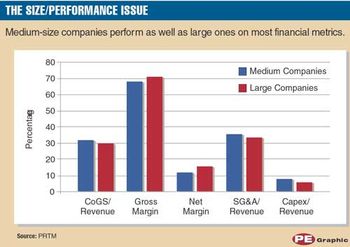
For decades, blockbuster product development has driven the pharmaceutical industry. Under that model, a handful of products-and, in some cases, a single product-produce the lion's share of revenue and dictate a company's strategic direction. As companies get larger, they rely more and more on blockbusters to sustain their growth. The high cost of developing major, successful drugs only reinforces the need to focus on blockbusters. It's a vicious cycle that remains firmly in place for most Big Pharma.
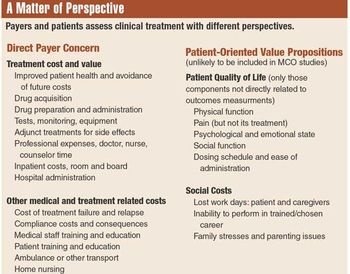
Managed care organizations (MCOs) and pharmacy benefit managers (PBMs)-representing 110 million US patients-have adopted new guidelines for formulary submissions. As a result, they now reject 40 percent of new drugs. Those standards, the most visible component in an approach called outcomes-based access, indicate a revolutionary change in the formulary decision making process that affects 46 percent of the insured population. Many pharmaceutical companies are being caught by surprise.

Employees in the pharma industry, who once expected lifetime employment, now find themselves facing some of the same dilemmas, including job insecurity and declining stock values, as those in beleaguered industries such as defense and finance. The pharma industry has seen more than its fair share of mergers and acquisitions, and employees increasingly question whether they have a future within their company. Those who make the hiring decisions for large pharma companies say such doubts are reasonable in the current climate and that an honest self-assessment of a variety of factors, including faith in management, opportunity for growth, and job

PR is more than free ink. It is even more than good free ink.

Current lawmakers make frown on cannabis use, but for thousands of years people used it to treat conditions as diverse as rheumatism, convulsions, tumors, and pain. Now the small, private UK company Oxford Natural Products has completed Phase I trials on a cannabis derivative for treating post-operative and cancer pain.
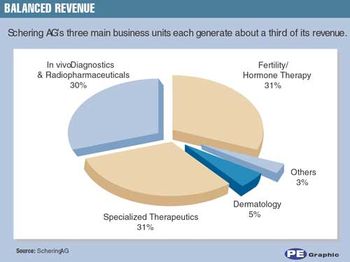
Don't expect us to launch products in the magnitude of a billion dollars in sales. For us, a product is very interesting at $200 or $300 million."

Pharma is finally feeling the ill effects of the US economic downturn. In response, many companies are restructuring and downsizing. But pharma industry professionals are well positioned to take advantage of many avenues of employment, including other industries, entrepreneurial ventures, and consulting.

An FDA advisory committee is recommending that over-the-counter painkillers bear stiffer warnings in light of continued episodes of liver and other internal organ damage when consumers take the products in combination with other medications.

Multi-tier formularies that set higher co-pays for the most expensive pharmaceuticals reduce beneficiaries' overall spending on prescriptions.

Companies, like individuals, must stay in shape, and both must search-in an environment of high demands on time and resources-for the right tools to achieve and maintain fitness. The pharma industry's current challenges suggest that the need for fitness may be greater than ever:

A jittery stock market, repeated profit warnings, concern about accounting practices, another industry mega-merger, and a new raft of legislative proposals. Small wonder that US analysts find it difficult to separate the words "troubled" and "pharmaceutical industry."

FDA's September announcement that it plans to transfer some therapeutic biologic review functions from the Center for Biologics Evaluation and Research (CBER) to the Center for Drug Evaluation and Research (CDER) caught most agency officials and Washington observers by surprise.

I was wondering whether I could take any more pain, when the moment slowed to a crawl. Pain wakened fear. Eternity lingered alongside. Mortality, grinning over my shoulder, blew a chill breath across the nape of my neck. "Dying would end the pain," I thought. "But I don't want to die like this."

Consumers who lack pharmacy benefit coverage are more likely to ask physicians about the cost of treatments than those who have coverage, according to data from FDA research on the impact of direct-to-consumer advertising.

Rarely does the head of a top pharma company agree to meet with a journalist in the midst of a strategic challenge as large as this one-Merck's plan to establish Medco Health Solutions as a separate, publicly traded company.

Is a pharma website a type of labeling, a form of advertising, or some new hybrid? The industry has used the internet as a communication channel since 1994, yet, after nearly a decade of online medical development and experimentation, none of the major regulators has decided yet-or offered any clear guidance about-what constitutes "acceptable use."

I thought I knew all of the definitions for healthcare compliance when I left my job at a traditional pharma company in 1998 to become chief operating officer of a company that sold both medical diagnostics products and pharmaceuticals.